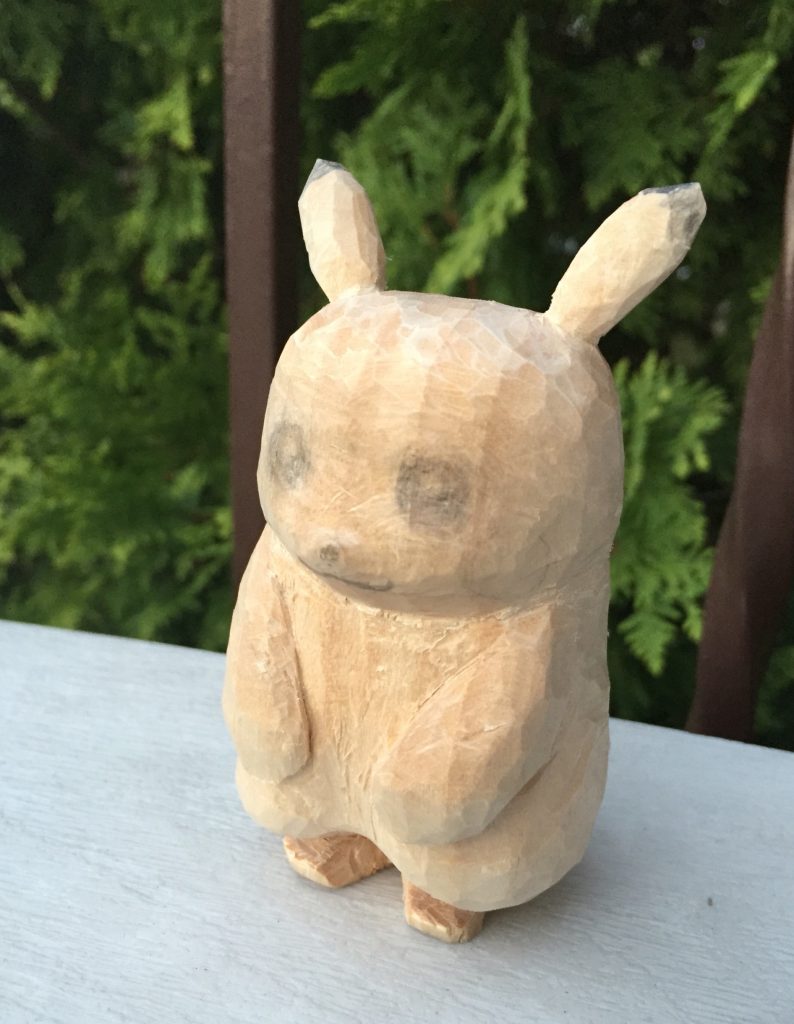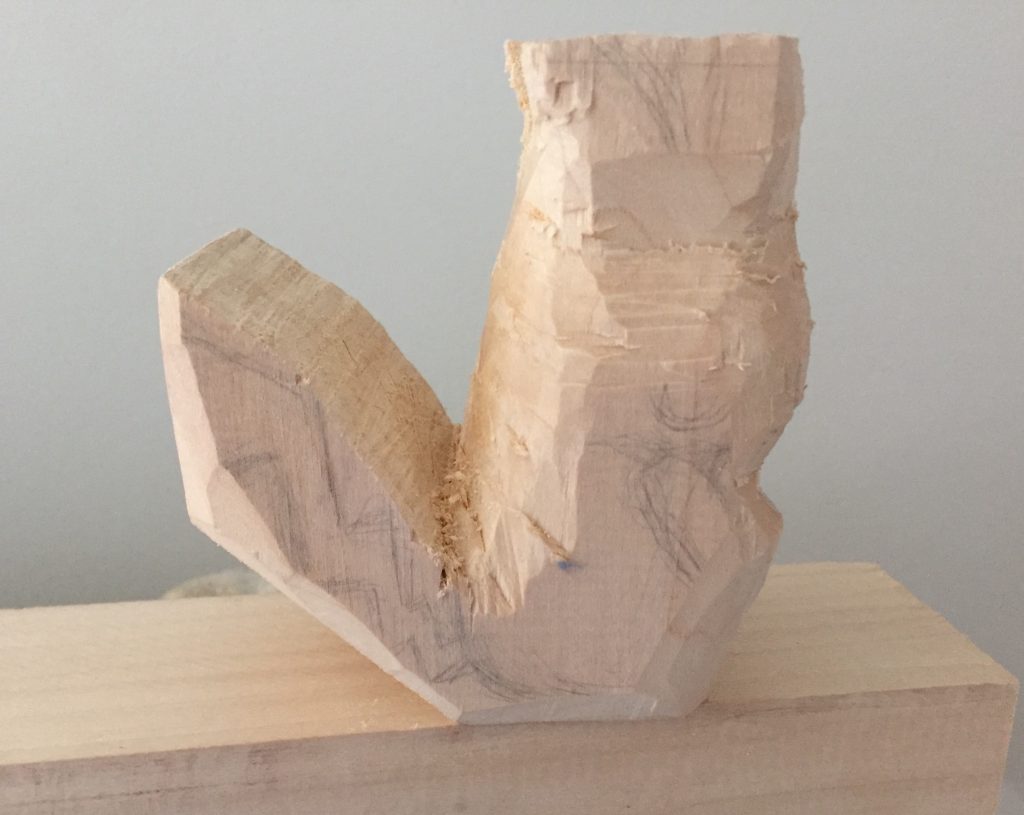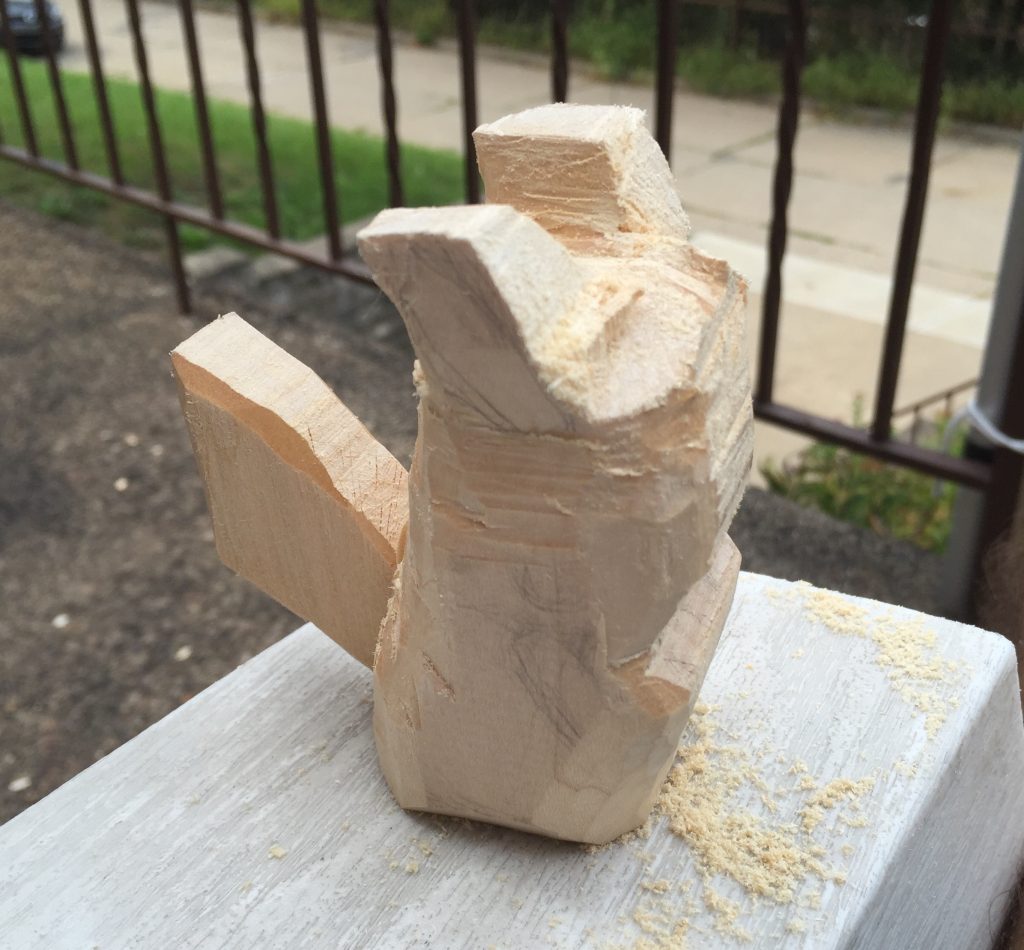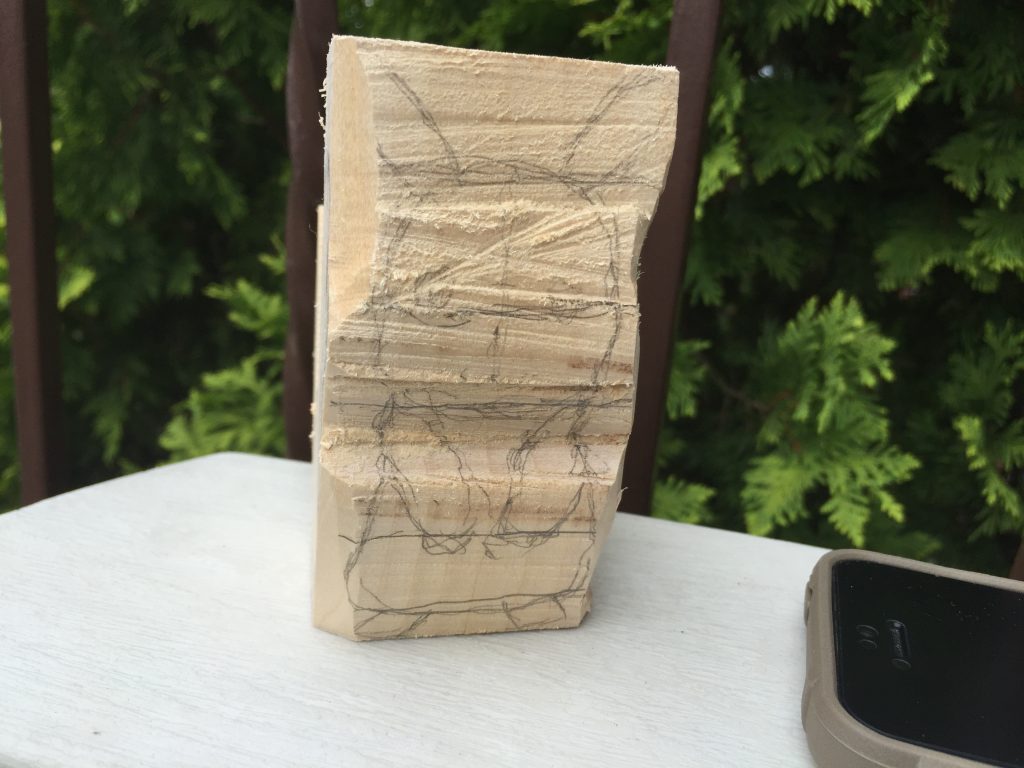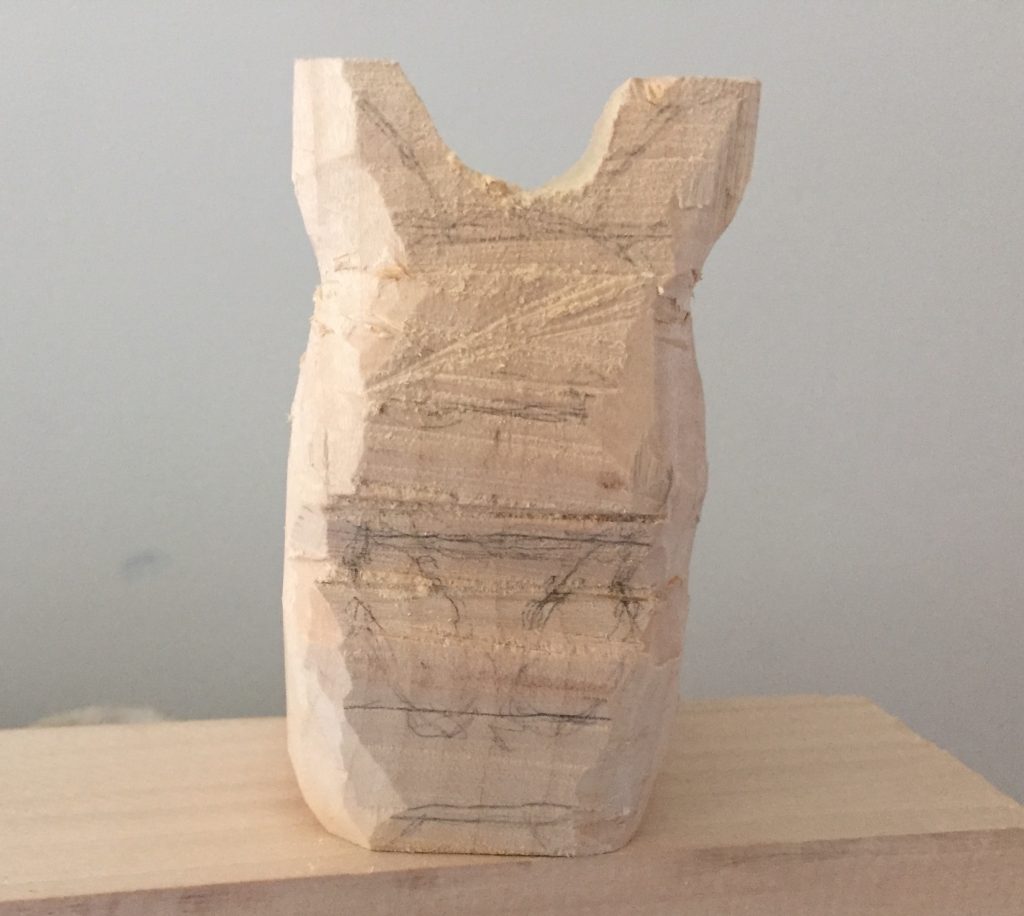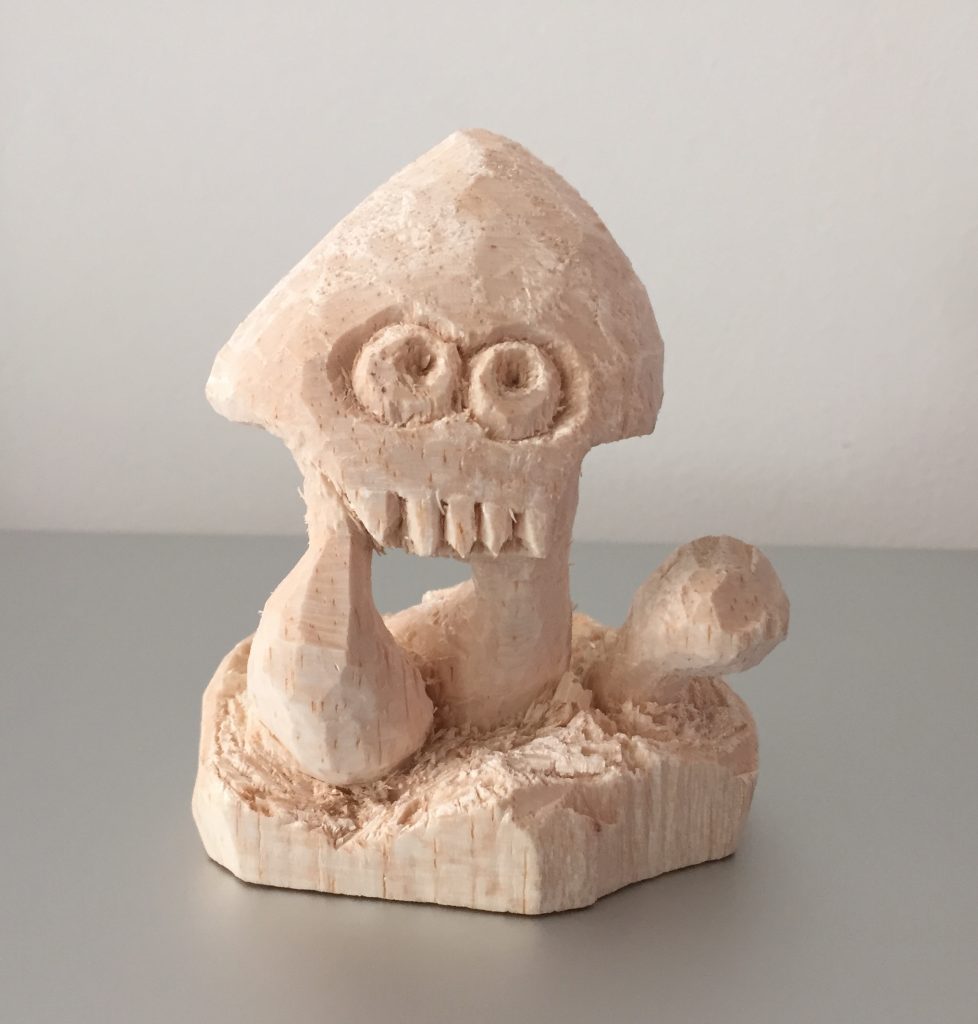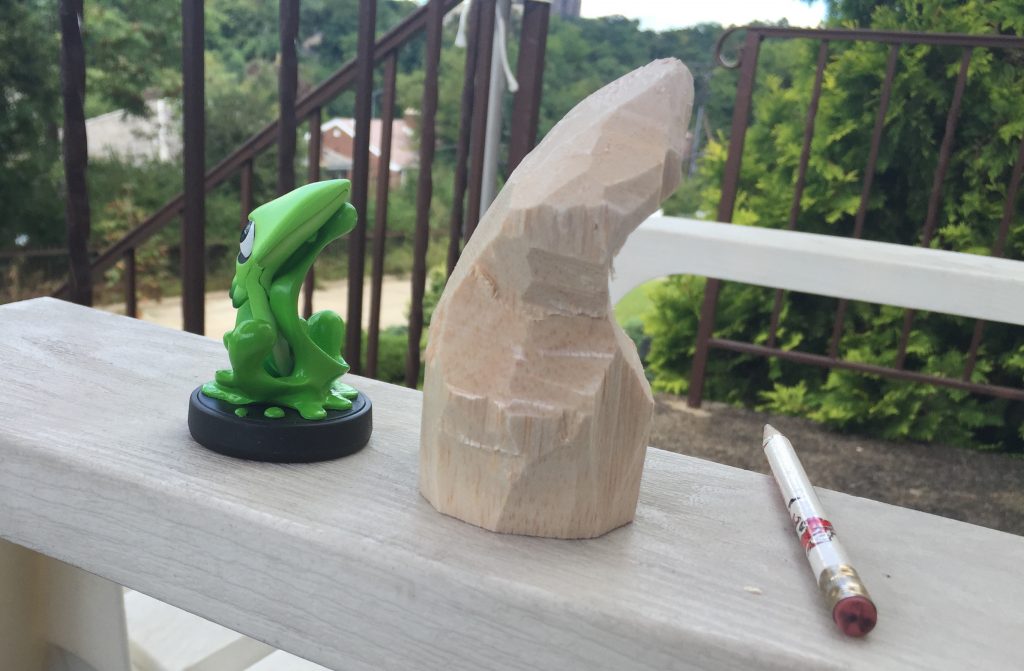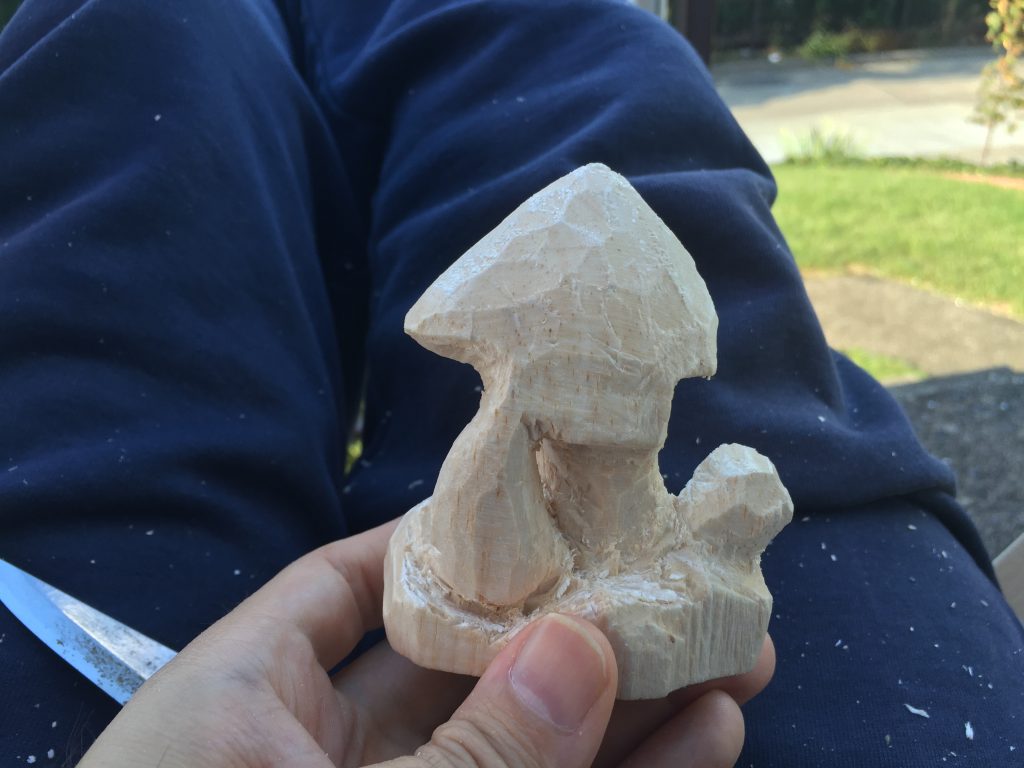Pikachu
This was my first basswood carving. I made his nose a bit too low, but it still looks like him (also made his ears too small).
The roughout and the bandsaw
Instead of trying to describe what a roughout is, I’ll show you. This was cut from a block of wood with a coping saw. Here’s a link to what that looks like.
Even though basswood is considered a soft wood it’s still rather hard. It is possible to carve an entire block of wood with a knife, but it’s hard. It’s hard on your hands and it takes a lot of time. I first tried to using a coping saw to cut the block down, but I didn’t have a vise to hold the wood. I was holding the wood on a step with my foot and sawing it, this was next to impossible, . “Forget this” I thought, this is an excuse to buy a bandsaw. I got a small Skil brand bandsaw and it was well worth it. I paid around $130.
Carving from a real life “thing” or object
Trying to carve something from a photo or model is hard because you have to draw it on the wood. Then when you start to carve, you carve off your pencil marks and you have to replace them. This can be a pain, but I don’t think there is another way. I drew the basic shape, then cut the excess with a bandsaw. Looking back, I would have used a drawing online, printed it out, glued it to the wood and cut the block out from that instead (the roughout).
What I’ve learned and the knife
I learned basswood is hard to carve for a beginner. Having more experience now, I don’t find it as hard. I can use the wood grain to my advantage, I carve much quicker and it’s easier. I also learned that my knife was too long for some detailed work. To this point I had been using the Morakniv 120 knife. From watching Gene Messer videos I learned that I wanted a 1.5″ knife. I bought two knives. The short version of the Harley Refsal knife with a 1.5 inch blade and The Scout knife by Mike Shipley with a 1.25 inch blade. It says this is a beginner knife, but to me it just seems like just another knife with a good blade length.
Cutting the roughout and chip size
Generally speaking a more experienced carver can take bigger cuts. They know as Harley Refsal said in a video where to place the knife and how much to cut. A newer carver will probably take smaller cuts. I take smaller cuts when I’m not sure where I’m going. One thing I learned was, I tend not to go far enough. I don’t mean on an individual cut, but as a whole. Usually I can look at my beginning carvings and see that I could have carved a shape deeper or added details. I think a new carver has the tendency to carve on the wood rather than into the wood. I realized early this would be something to overcome and worked hard on my beginning carvings to cut deep into the wood and bring out a shape. It wasn’t easy.
